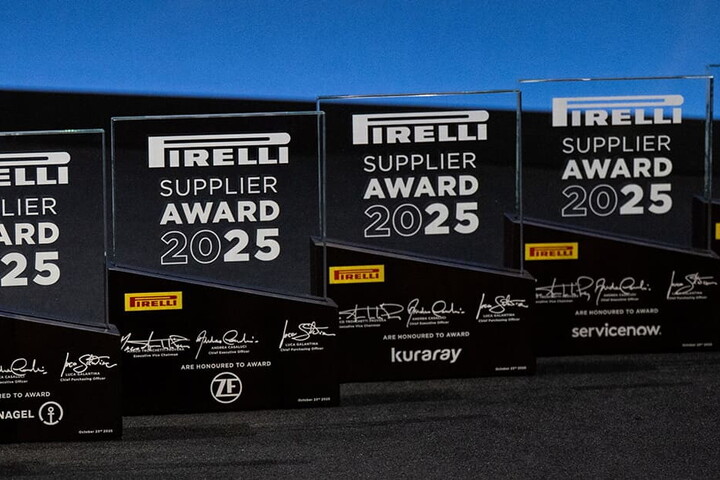The two-minute video that introduces Pirelli's new virtual reality training system to trainees is exciting enough to make anyone want to be a machine operator.
A man in a black shirt with a Pirelli logo is fitted with what looks like body armour (but is in fact a sensor-filled vest that can track his movements). He is then given a “knowledge download” in safety, quality and efficiency and prepared “to fight production problems”.
Then he is ready for full immersion in the simulator – a 16 metre by six metre box kitted out with a big screen and moving machine parts that are just like the real thing.
PLAY time
The “Performance and Learning Acceleration for You” programme, also known as PLAY, is transforming the way Pirelli's operatives are trained – and producing huge benefits along the way. It cuts training time by 50 per cent, while trainees show a 25 per cent improvement in efficiency, which is sustained over time. There are no safety risks and no losses on production or quality during training time.
The first country to try it has been Mexico where it has been well received. So far 50 people have stepped into the box for training. They spend around four hours a day manipulating the machine over a period of 15 days – usually in pairs, as the machine needs two operators. And they emerge ready to carry out the tyre building process or drive the full manufacturing system.
“We are training people who are around 20 years old,” explains Giuliano Menassi, Senior Vice President Manufacturing at Pirelli. “It's a motivation for them. They are familiar with games and playing in a very interactive way and this is very interactive.”
The freedom to experiment
A trainer explains how to turn the machine on and what the main features are but then it is sufficiently easy for people to use and get to know by themselves. And the trainees relish the freedom of being allowed to experiment without a trainer looking over their shoulder all the time.
Pirelli believes this is the future of training. Virtual reality is widely used in the aviation industry with flight simulators for pilots, but in other fields it is rare to have a real size, fully immersive system with tracking.
It will not replace Pirelli's traditional training methods, which the company has also been working to improve, but Pirelli believes that this hi-tech format is well-suited to labour intensive processes – and the tyre - building part of Pirelli's production line is the most labour intensive. In a factory of 1,000 people between 200 and 300 of them are in the tyre-building area. Mexico's factory is planned to grow to more than 2,000 people and more than 500 people will be put through virtual training there.
The next countries to step into PLAY training will be Romania and China. And Pirelli is developing another simulator for two other types of tyre-building machines for Germany and Italy.
Tracking every movement
So why is the technique working so well? One reason is that the virtual reality machine standardises processes. It tracks every movement the trainee makes and lets them know whether it is right or wrong. This comes in useful in troubleshooting, which is the real basis of improving a company's performance and efficiency.
Workers can be trained in troubleshooting and learn the best way of doing something, rather than just reacting when a problem comes up and making a best guess based on their knowledge.
Another reason is that it gives trainees hands-on time with the real equipment. In the past, someone might have been a bit afraid of doing something wrong on a computer panel, for example. Now they can do whatever they want to it and see what happens.
Trainees can relax in the knowledge that they are perfectly safe while they are learning. If the cameras notice they have accidentally entered a safety zone, for example, the machine will be stopped and they will be told why.
And unlike training on a real production line, there is no risk to the company of losing material or causing damage to the machine.
“The training of our people is key and vital to increasing the efficiency of our organisation,” says Menassi. “This is a new way of training people and it really makes a difference.”




